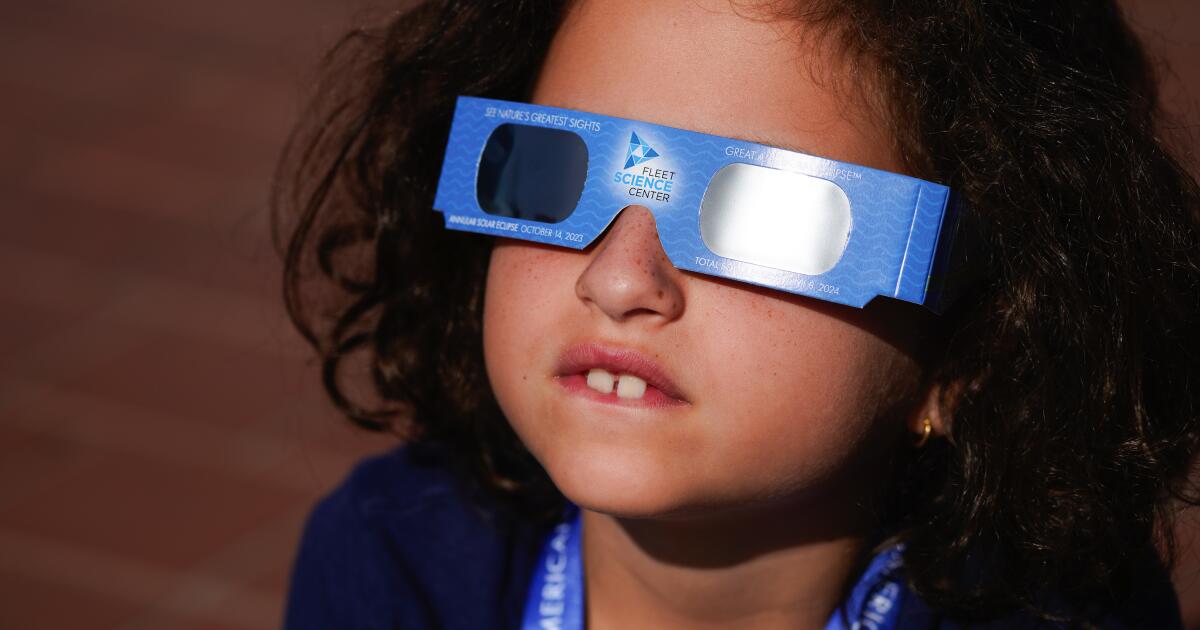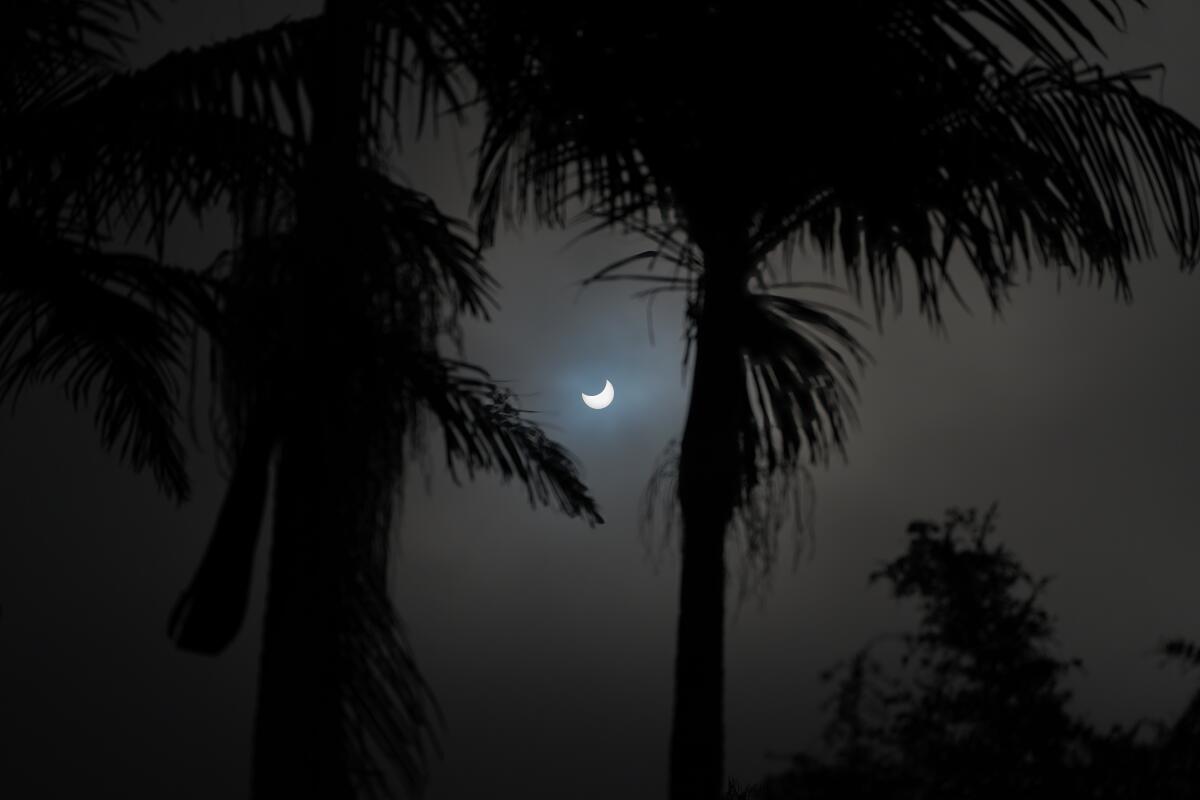
Don’t feel bad if you’re unable to dart off to another part of the country Monday to enjoy the rare spectacle of a total solar eclipse.
If the weather gods are kind, for us in San Diego County about 54 percent of the sun will become obscured by the moon in late morning.
“The sun will appear as a crescent, which is always stunning,” said Adam Burgasser, an astronomer and astrophysicist at UC San Diego. “We rarely see it that way.”
The region will be on the fringe of an eclipse in which the moon will briefly cover the entire face of the sun for people along a 115-mile wide path that extends from south-central Texas to northwestern Maine, taking in such large cities as Dallas and Cleveland. The lower 48 states won’t experience another total eclipse again until 2044.
Monday’s celestial ballet will be very similar to the dramatic partial eclipse that stirred joy across the county in August 2017. The skies largely cleared just before that event. Forecasters say the same could happen Monday, even though a weak Pacific storm is expected later in the day.
Thousands of people turned out for a free viewing party at Fleet Science Center in San Diego’s Balboa Park during the 2017 event. The center will party down again on Monday, from 9 a.m. to noon. Astronomers will field people’s questions and show them how to view the eclipse safely.
People should only use eyewear that carries a message saying they are ISO-certified. Regular sunglasses won’t provide adequate protection.

That’s not a crescent moon. That’s the sun last October, as seen from Balboa Park, with the moon taking a bite out of it.
(Nelvin C. Cepeda/The San Diego Union-Tribune)
In San Diego, Monday’s partial eclipse will begin at 10:03 a.m., when the moon starts to blot out the lower half of the sun. The eclipse will peak at 11:11 a.m., when the sun will appear as an upside-down crescent. The drama will end at 12:23 p.m.
The sequence will begin one to two minutes later in the county’s mountains and deserts.
It will seem like things are happening slowly as the moon passes between the Earth and the sun, casting a shadow on the Earth. But that’s not the case. The moon orbits Earth at 2,288 mph — that is, traveling in one hour roughly the distance between San Diego and Philadelphia. The sun travels about 450,000 mph as it orbits the center of the Milky Way.
People who are in parts of the country exposed to total eclipse might notice that birds will abruptly stop chirping.
“They start to go into rest mode, because they think it is the end of their day,” Burgasser said. “It will be less obvious, but it can happen even in a partial eclipse.”
There also will be variations in how much darkness people experience during the eclipse.
“In the path of totality, where the moon completely covers the sun, the sky will become dark, as if it were dawn or dusk,” NASA says in an eclipse guide. “For those who only experience a partial solar eclipse, the sky will appear slightly darker than it was before the eclipse, depending on how much the moon blocks the sun in their location.”
And there will be variation in how much the temperature temporarily drops on Earth. NASA said the temperature could fall by as much as 10 degrees in areas exposed to total eclipse.
That figure is influenced by everything from cloud cover to humidity. The dip will be much smaller in San Diego County because far less of the sun will be obscured by the moon.





